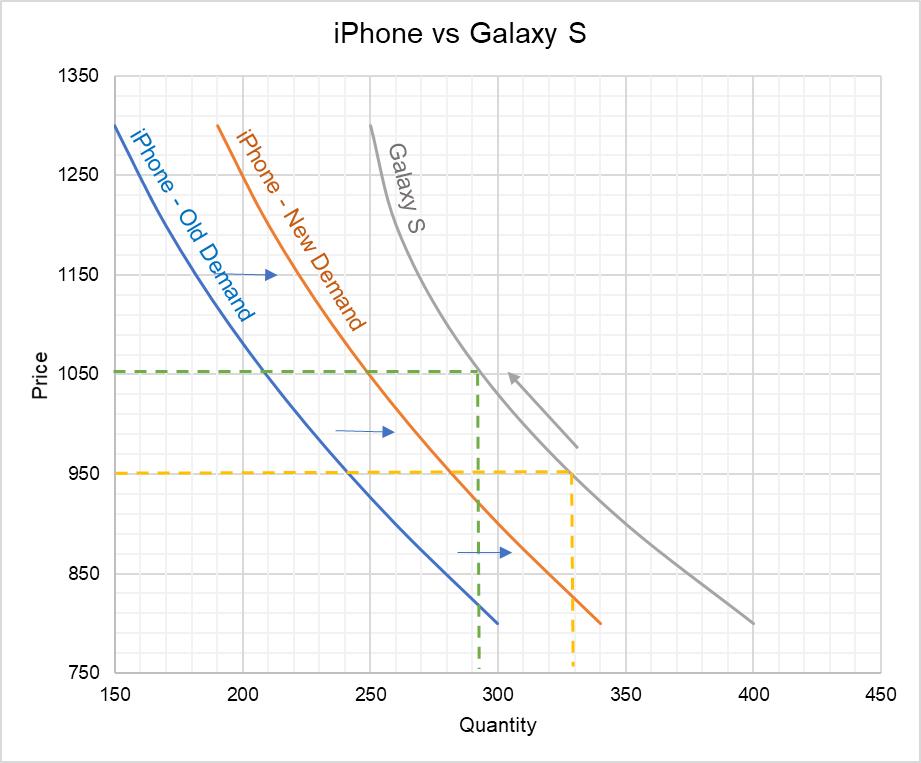Substitute vs Complements
Substitute goods (or simply substitutes) are products which all satisfy a common want and complementary goods (simply complements) are products which are consumed together. Demand for a product’s substitutes increases and demand for its complements decreases if the product’s price increases.
One of the determinants of demand i.e. factors that can bring about a shift in the demand curve of a product is the price of the related goods. There are two types of related goods in general: good(s) which can be consumed instead of the product and good(s) which is consumed together with the product. The former is called a substitute good and the latter is a complementary good.
Substitute Goods
Coke and Pepsi, iPhone and Galaxy S series, Nike and Adidas are a few examples of substitute goods. If price of Coke increases, demand for Pepsi should increase because many Coke consumers will switch over to Pepsi. Similarly, prices of iPhone and Galaxy S affect their mutual demand. Given that there are many fanboys who will reprioritize their spending to afford an iPhone even after the price increase, many rational consumers will weight their preference for one product over the other and the premium they are willing to pay.
Complementary Goods
iPhones and iPhone skins, air travel and hotels, etc. are examples of complementary goods i.e. goods that are used/consumed together. If iPhone becomes expensive and its quantity demanded decreases, you would expend the demand for iPhone covers to drop too and vice versa. It follows that demand for a product is to some extent dependent on the price of its complementary goods.
Other examples of complementary goods include cars and gasoline, Big Mac and McFries, coffee and cheesecake, etc.
Substitutes, Complements and Cross Elasticity of Demand
The extent to which two products are substitutes or complements can be measured by calculating their mutual cross elasticity of demand. The cross elasticity of demand measures the percentage change in quantity demanded of the product that occurs in response a percentage change in price of a substitute good. If the cross elasticity of demand is positive, the products are substitute goods. On the other hand, if cross elasticity is negative, the products are complements.
The following chart shows what happens to demand for two substitute goods, iPhone and Galaxy S, when the price of Galaxy S changes.

When the price of Galaxy S changes from $950 to $1,050, its quantity demanded falls from 330 million per annum to a little more than 290 million. In response, the demand curve for iPhone shifts outward, i.e. its demand increases.
by Obaidullah Jan, ACA, CFA and last modified on